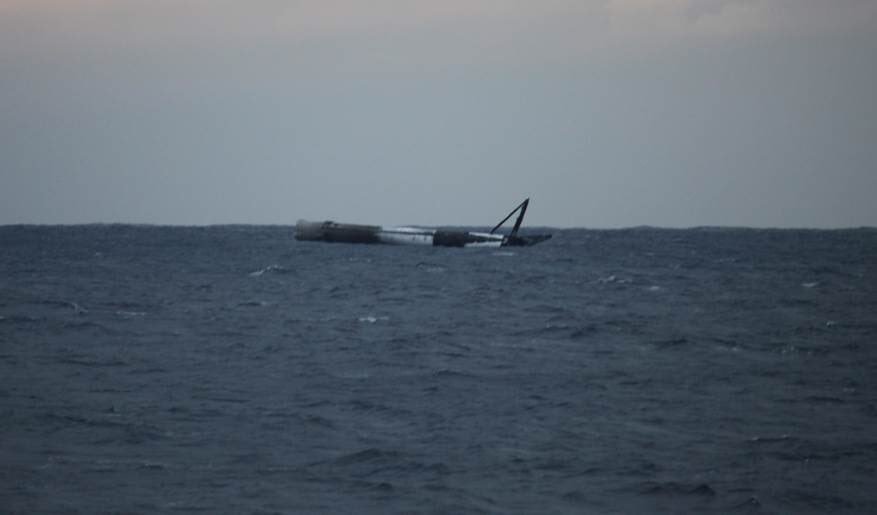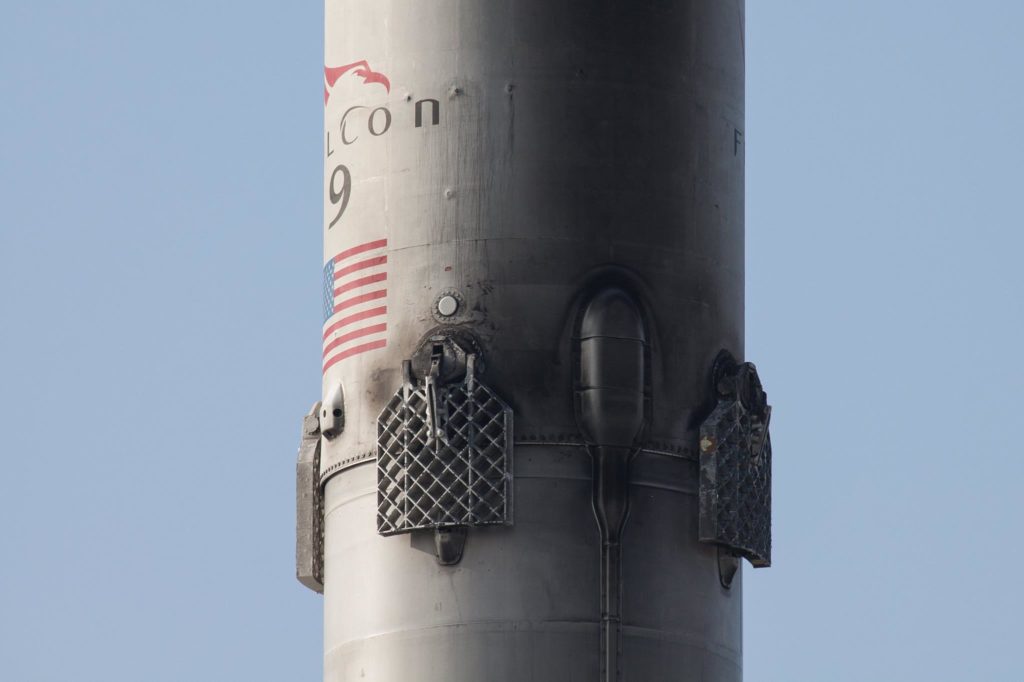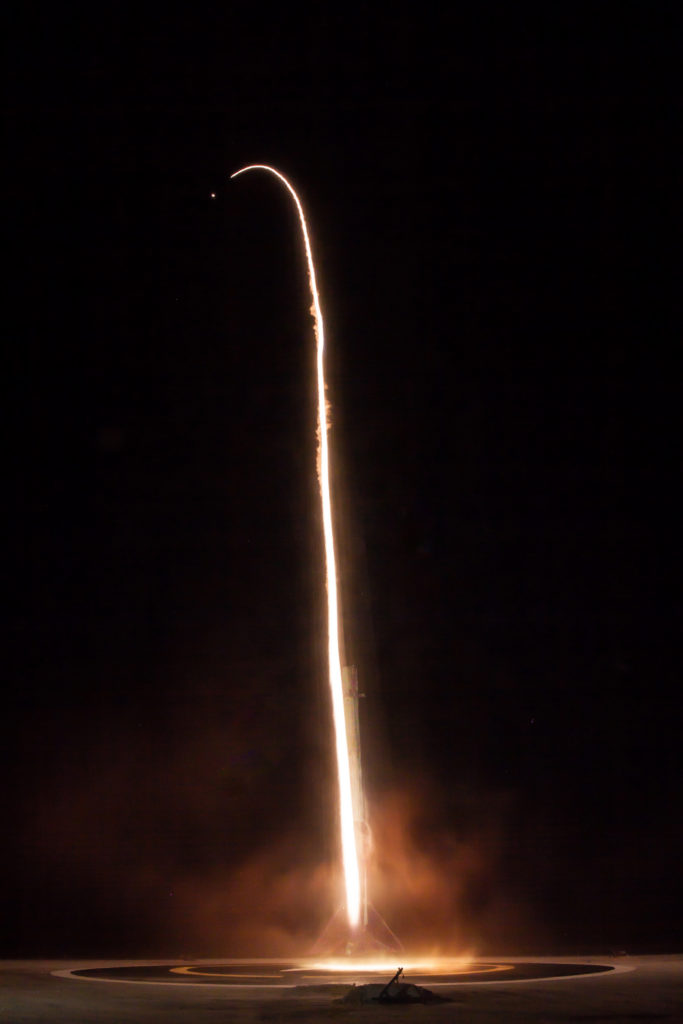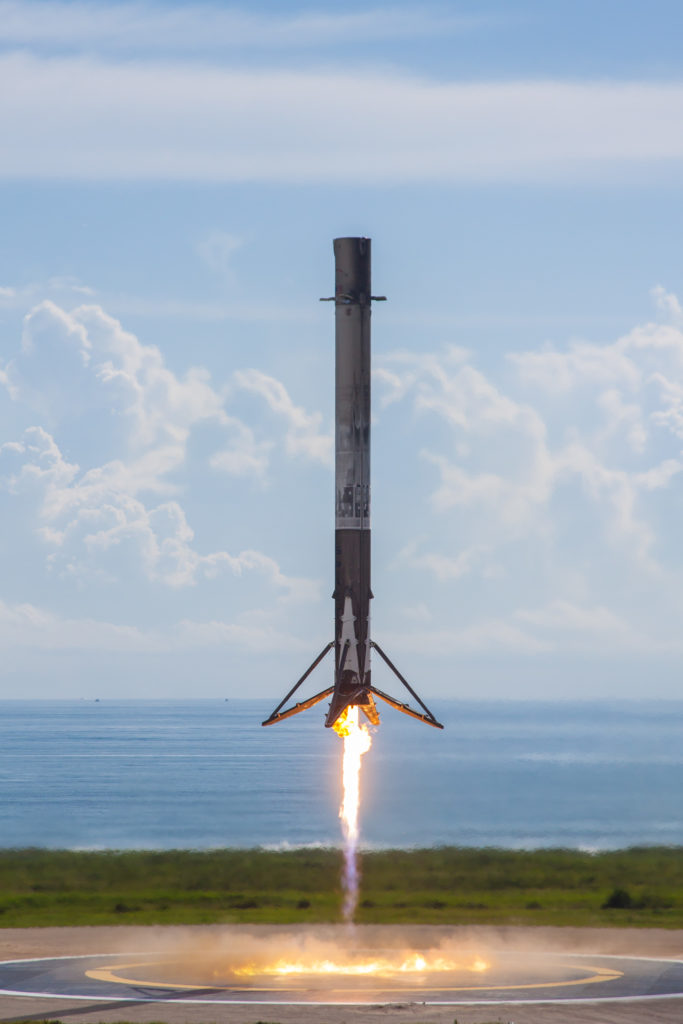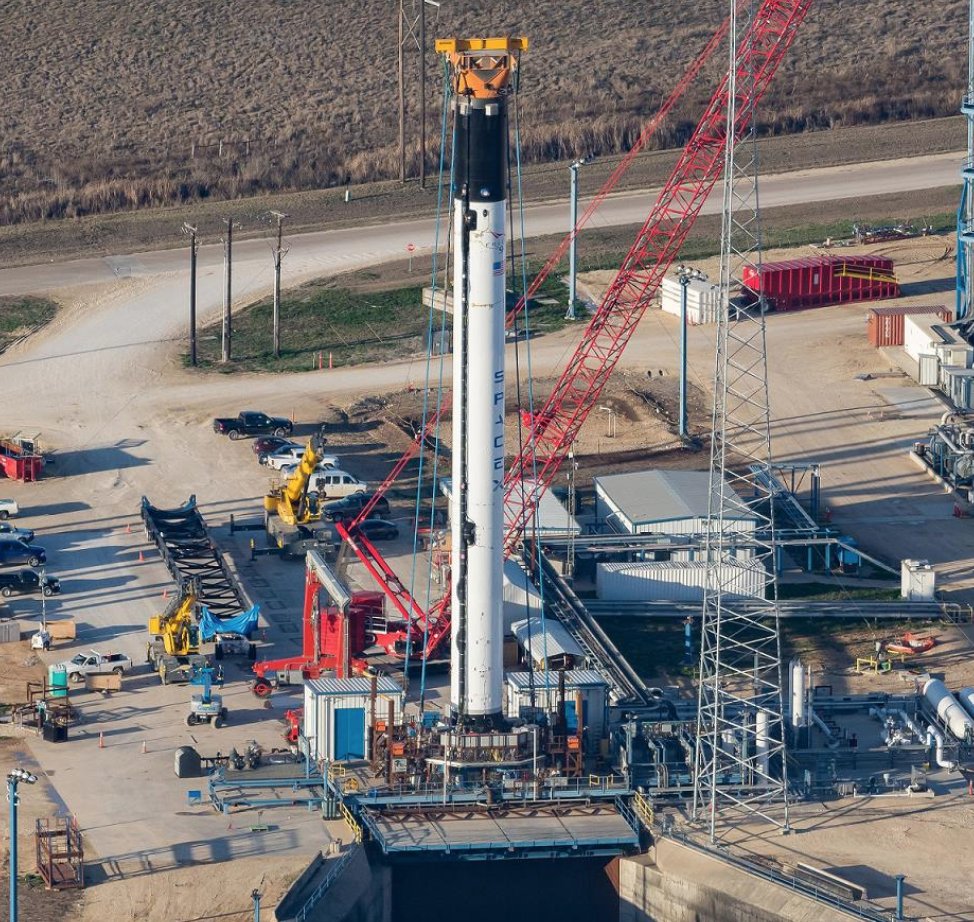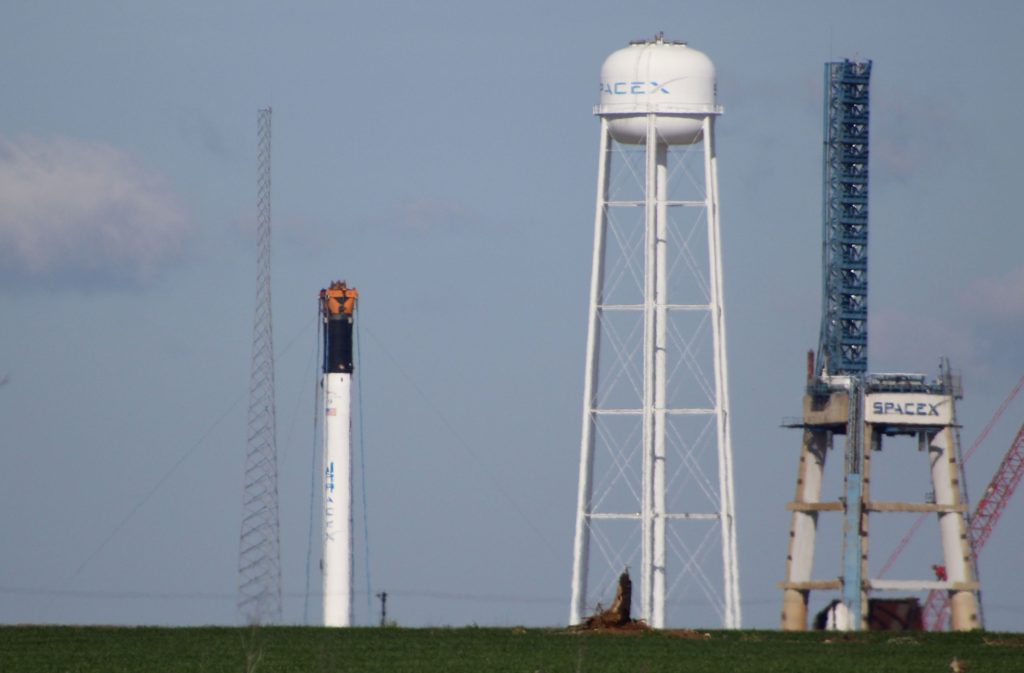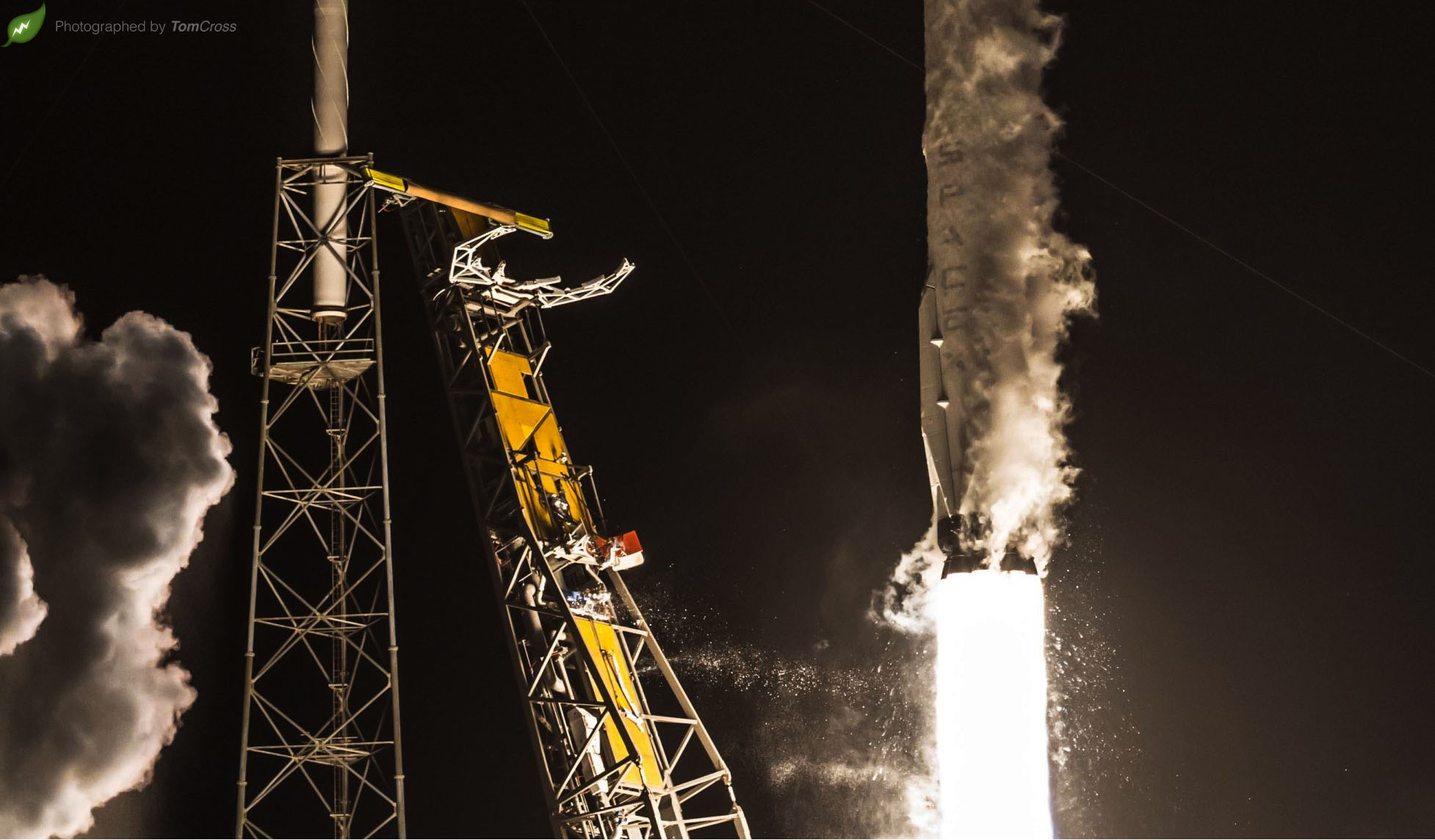
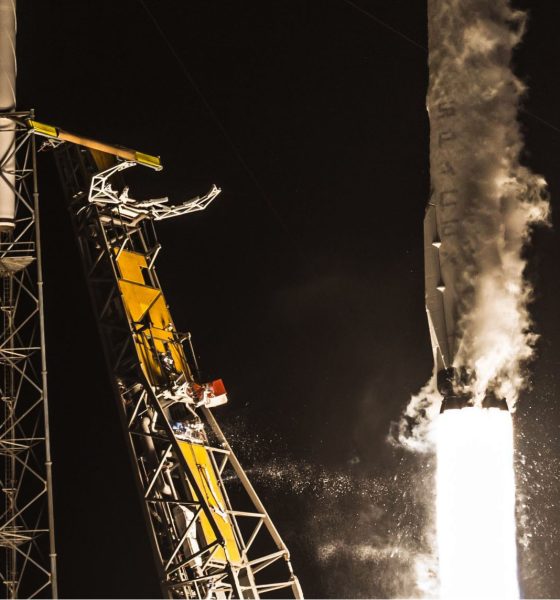
News
SpaceX Falcon 9 Block 5 will usher in a new era of rapid reuse rockets
Despite all missions being readily in the range of recovery, SpaceX has only attempted to recover its Falcon boosters after two of the company’s five 2018 launches. If anything, the attachment to Falcon boosters and the apparent melancholy felt by many observers when they are not recovered is a testament to the staggeringly abrupt success of SpaceX’s reusable rocketry program.
- Falcon Heavy’s side boosters seconds away from near-simultaneous landings at Landing Zones 1 and 2. (SpaceX)
- GovSat’s Falcon 9 1032 spotted in one piece by Elon Musk after a soft-landing in the Atlantic. (Elon Musk)
Aside from Falcon Heavy’s center core and 1044, each booster expended in the last several months (Iridium-4, GovSat-1, and PAZ) was aging, flight-proven, and nearing the end of its operational life: Block 3 and Block 4 Falcon 9s were simply not designed or expected to fly more than two or three times total. Their seemingly premature deaths were thus a necessary step along the path to Block 5 and truly rapid and cheap booster reuse; perhaps as pragmatic as quite literally making space for new and superior hardware at SpaceX’s many facilities. The demise of Falcon Heavy’s center core nevertheless made for a spectacular video (skip to 1:10, or watch the whole thing…).
The end (of old Falcons) is nigh
Despite the carnage in recent times, the next two weeks are likely to see several more flight-proven Falcon 9s meet their timely, watery demise, or at least complete their final flight in the case of CRS-14.
- Iridium-5 (NET March 29) will be flying atop Booster (B) 1041, previously used for Iridium-3 (Oct. 2017)
- CRS-14 (NET April 2) will make use of B1039, a booster that debuted with the launch of CRS-12 (Aug. 2017)
- Iridium-6/GRACE-FO (NET April 28) was confirmed just yesterday to be flying on B1043, the booster that launched the now-infamous Zuma spysat this January
- Lastly, SES-12 (NET April 30) will likely use B1040, which orbited the USAF’s secretive X-37B spaceplane in Sept. 2017
- Booster 1041 arrives in Port of San Pedro, CA in Oct. 2017 after successfully completing its first launch. (Pauline Acalin)
- Booster 1039 lands after successfully launching CRS-12’s Cargo Dragon into orbit. 1039 completed its final mission on Monday afternoon, April 2. (SpaceX)
- After landing at LZ-1, B1043 was refurbished in approximately four months. (SpaceX)
- Falcon 9 B1040 returns to LZ-1 after the launch of the USAF’s X-37B spaceplane. (SpaceX)
While more than a little hard to believe, this series of launches over the next 4-6 weeks may see SpaceX’s fleet of flight-proven boosters shrink to no more than two flightworthy cores – perhaps just a single Falcon 9. The launch of NASA’s exoplanet observatory TESS – set to use the brand new Falcon 9 B1045 – will likely see one additional flight after landing at LZ-1 or OCISLY in mid-April. The final flight-proven booster known to exist in a potentially flightworthy state is B1042, famous for its moderate attempt at self-immolation and Roomba-murder (correction: the Roomba murder attempt was actually a few weeks before, during the landing of SES-11’s flight-proven booster) after the successful launch of Koreasat-5A in Oct. 2017. B1042’s future is unknown at this point, however, as the post-landing fire may have damaged the booster beyond repair.
Rounding out SpaceX’s entire fleet of boosters, at least after SES-12, are the flight-proven B1045, the first-ever Block 5 booster (B1046) – flight-proven after Bangabandhu-1, and the second Block 5 booster (B1047). Assuming that Block 5’s first hot-fire testing has gone well at SpaceX’s McGregor, TX facilities, it’s probable that B1048 and perhaps B1049 will roll out of the Hawthorne factory and head to Texas for their own tests between now and then.
https://www.instagram.com/p/BgfboKIB17H/
TL;DR: SpaceX is betting heavily on Block 5
The purpose of this brief jaunt through the annals of SpaceX’s rocket fleet and production goals is to demonstrate just how aggressively SpaceX has bet on Block 5 – both on its success as a new and complex technological system and as an unprecedentedly reusable orbital-class rocket. If any design or manufacturing flaws are discovered in the first several Block 5 Falcon 9s, or if Block 5 turns out to be less reusable than SpaceX hopes, the company could well find its manifested launch dates slipping as flightworthy boosters – not satellites – become the bottleneck for access to orbit.
Nevertheless, SpaceX has at least six full-up Falcon 9 boosters in various stages of integration and completion at their Hawthorne factory, as well as 1046 in (or departing) Texas and 1047 presumably on its way there. SpaceX certainly has a strong track record of introducing its many upgraded iterations of Falcon 9 in the past – fingers crossed that that trend continues with Block 5. If SpaceX’s confidence still rings true a month or two from today, a new era of access to space will have truly begun, and SpaceX will be able to quite rapidly refocus a considerable portion of its workforce on getting to Mars.
- SpaceX Block 5 Falcon9 at McGregor, Texas [Credit: Chris G – NSF via Twitter, Reprinted with permission from NASASpaceflight.com]
- SpaceX continues a cautious regiment of tests for the newest Falcon 9 upgrade, Block 5. (Reddit /u/HollywoodSX)
Follow us for live updates, behind-the-scenes sneak peeks, and a sea of beautiful photos from our East and West coast photographers.
Teslarati – Instagram – Twitter
Tom Cross – Twitter
Pauline Acalin – Twitter
Eric Ralph – Twitter

News
Tesla FSD earns high praise in South Korea’s real-world autonomous driving test
As per the Korea Expressway Corporation’s report, the FSD test was conducted on December 15, 2025, from 10 a.m. to 6 p.m.

Tesla’s Full Self-Driving (FSD) has received a bullish assessment from the Korea Expressway Corporation following a real-world autonomous highway driving test.
A report of the test, shared on Naver Cafe, showed high praise for the system’s safety, capabilities, smooth maneuvers, and confidence.
South Korean highway test
As per the Korea Expressway Corporation’s report, the FSD test was conducted on December 15, 2025, from 10 a.m. to 6 p.m. Four people were in the Tesla that was tested, including the head of the mobility department. All four FSD driving modes were tested, from “Sloth” to “Mad Max.”
To test FSD’s performance, the system was tasked to operate on highways such as Gyeongbu, Cheonan, and Cheonan-Nonsan, as well as city areas in Dongtan New Town, Sejong Special City, and Daejeon Metropolitan City, among others.
Since FSD is only available for the Tesla Model S and Model X that are imported to South Korea from the United States, the system was not tested in a Model 3 or Model Y, which comprise the majority of Teslas on the country’s roads today.
Highway test results
Results showed FSD performing well, both in inner-city roads and on highways. In inner city roads, the testers noted that FSD was capable of autonomous driving at a level that already exceeds that of general human drivers, except in very few areas, such as unprotected left turns and work zone intersections.
In highways, the testers described FSD’s performance as “excellent,” though the system still showed frequent cases of violations in local bus lanes and max speed limit rules. These, however, could hopefully be addressed by Tesla in a future FSD update without many issues. The testers also noted that in some parts of the test, FSD seemed to be driving autonomously in accordance with traffic flow rather than strict traffic rules.
테슬라 Fsd 고속도로 자율주행 테스트 결과 보고 by Simon Alvarez
News
Tesla claims nearly 20% market share as Norway sets new car sales record
Tesla captured roughly one in five new cars in Norway, highlighting its dominance in the world’s most EV-friendly market.
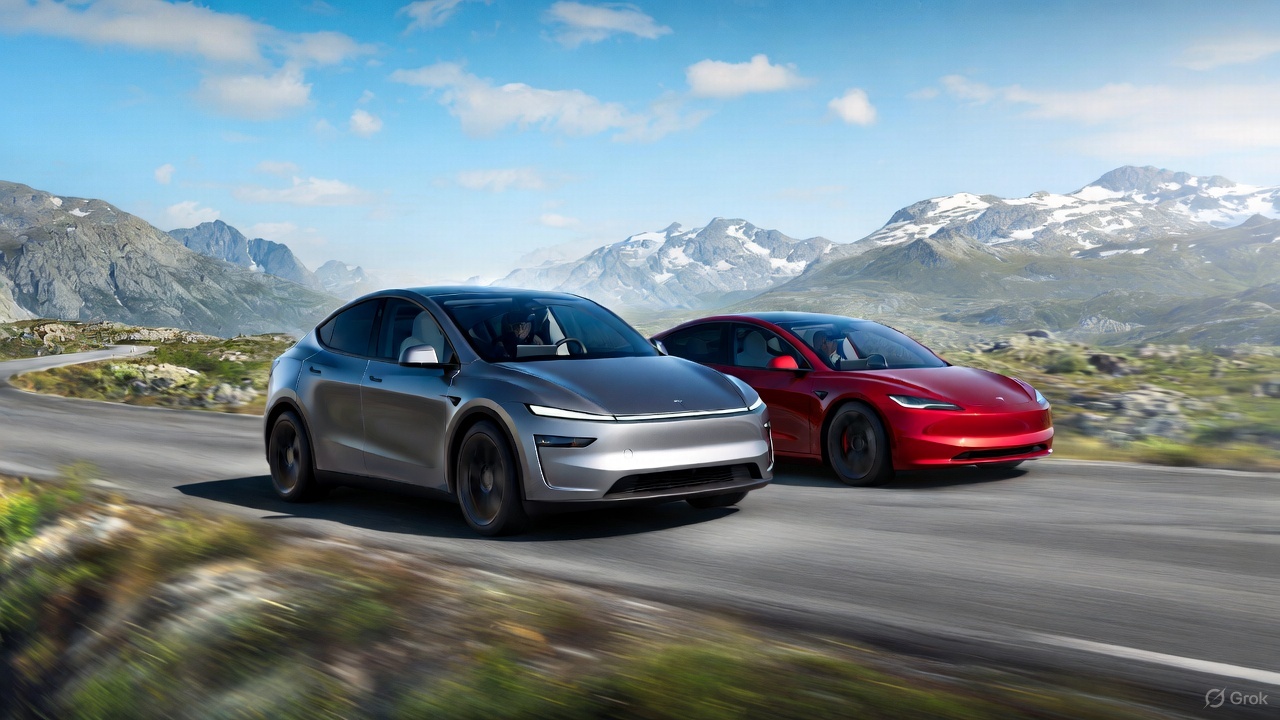
Norway shattered its all-time new car sales record in 2025, and Tesla emerged as the clear winner. A year-end rush ahead of higher EV taxes pushed registrations to nearly 180,000 vehicles, with electric cars accounting for 96% of sales.
Tesla captured roughly one in five new cars in Norway, highlighting its dominance in the world’s most EV-friendly market.
Norway’s EV rush
As noted in a CarUp report, Norway’s electric vehicle sales in 2025 surged, thanks in part to buyers rushing ahead of a post–new year VAT increase of roughly 50,000 kronor on many new electric cars. This ended up pulling demand forward and setting a national record with almost 180,000 registrations in 2025.
The result was unprecedented. From the vehicles that were sold in 2025, 96% of new cars sold were fully electric. And from this number, Tesla and its Model Y made their dominance felt. This was highlighted by Geir Inge Stokke, director of OFV, who noted that Tesla was able to achieve its stellar results despite its small vehicle lineup.
“Taking almost 20% market share during a year with record-high new car sales is remarkable in itself. When a brand also achieves such volumes with so few models, it says a lot about both demand and Tesla’s impact on the Norwegian market,” Stokke stated.
Tesla domination
Tesla led all brands in Norway with 34,285 registrations, which is equal to a 19.1% market share. These results place Tesla well ahead of Volkswagen and Volvo, which held a 13.3% and 7.8% market share in 2025, respectively.
On the model chart, Tesla’s strength was even clearer. The Tesla Model Y topped all vehicles with 27,621 registrations, accounting for 15.4% of the entire market. The Tesla Model 3 also ranked among the top five, accounting for 3.7% of Norway’s entire auto sales in 2025.
Other strong performers included Volkswagen’s ID.4 and ID.7, Toyota’s bZ4X, which commanded 4.9%, 3.9%, and 4.1% of Norway’s total sales in 2025, respectively.
News
Tesla China sees 2nd-best month ever by selling 97,171 vehicles wholesale in December
The results mark Tesla China’s second-highest monthly result on record, trailing only November 2022’s 100,291 units.

Tesla posted a sharp year-end rebound in China last month, with December’s wholesale figures climbing to their second-highest level to date.
The surge capped a late-year recovery for the electric vehicle maker, even as full-year wholesale figures still finished lower year over year. Still, the data highlights how Tesla China’s offerings still resonate with customers in the world’s most competitive electric vehicle market.
Tesla China’s December surge
Tesla China sold 97,171 vehicles wholesale in December, as per data from the China Passenger Car Association (CPCA). The results mark Tesla China’s second-highest monthly result on record, trailing only November 2022’s 100,291 units, based on data compiled by CNEVPost. The details of Tesla China’s December results, such as its domestic sales and exports, are yet to be released.
December’s wholesale results represent a 3.63% increase from the same month last year and a 12.08% jump from November’s 86,700 units. It also marked the second consecutive month of year-over-year growth, signaling renewed momentum in China.
Tesla’s late-year momentum is believed to be partly driven by Tesla pulling deliveries forward to allow buyers to take advantage of more favorable purchase tax policies before the calendar year ended. That strategy helped boost monthly performance even as competition in China’s EV market remained intense.
Tesla China’s FY 2025 volumes
Despite the strong December finish, Tesla China’s wholesale sales declined on an annual basis. The electric vehicle maker’s total wholesale figures for 2025 reached 851,732 units, down 7.08% year over year. This could have been due to a variety of factors, from intense competition in the domestic Chinese market to Giga Shanghai’s changeover to the new Model Y in the early part of the year.
Tesla Gigafactory Shanghai continues to play a central role in its global operations, producing the Model 3 sedan and Model Y crossover for both Chinese customers and export markets. The efficiency of Gigafactory Shanghai has allowed it to become Tesla’s largest factory by volume, as well as the company’s primary vehicle export hub.

